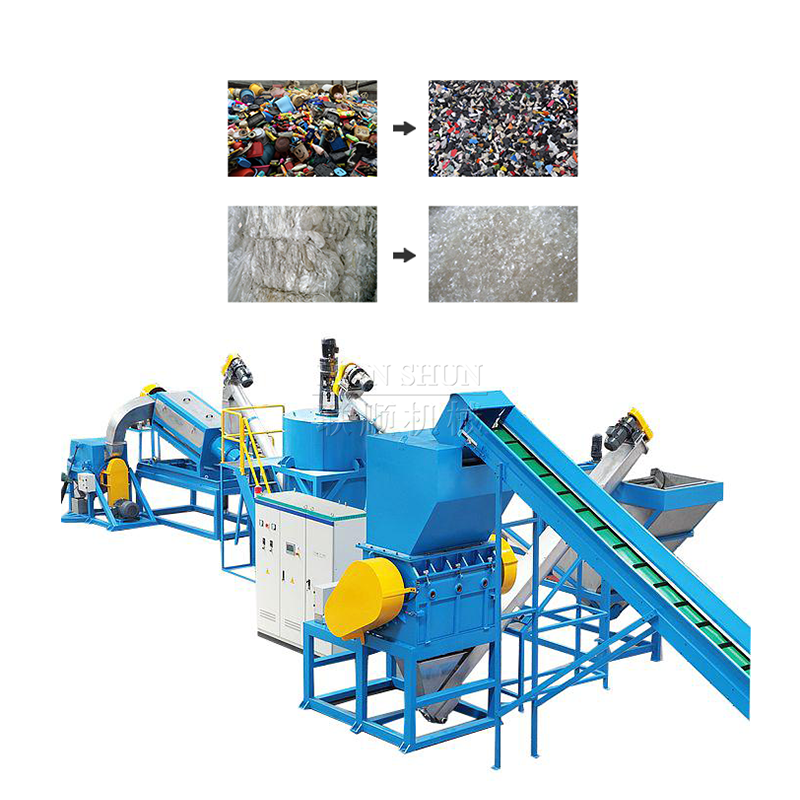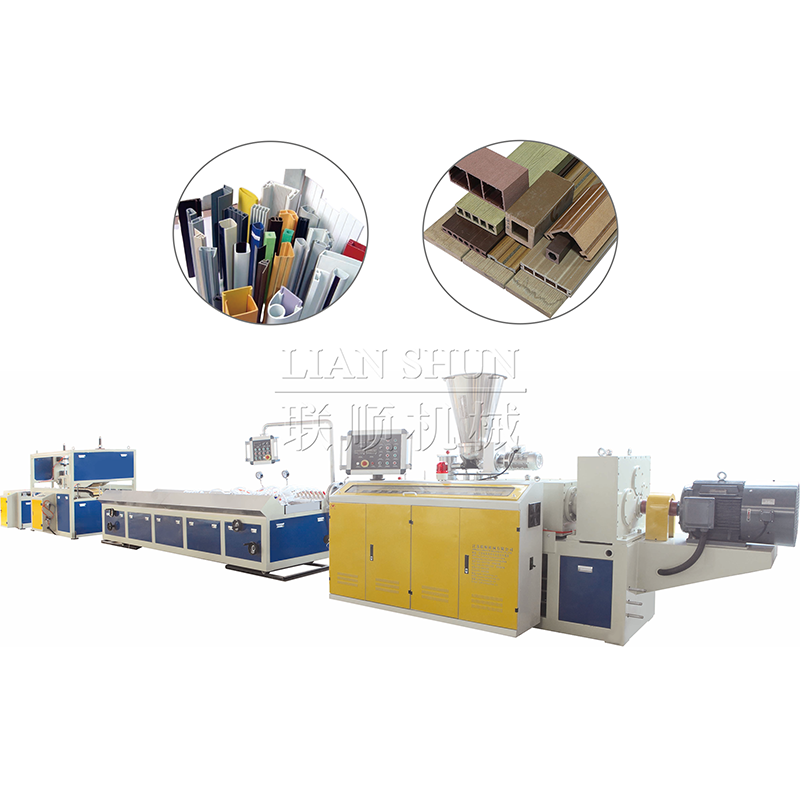On the Central Kenai Peninsula, plastic is getting a second life as lumber, thanks to a local collections program and innovative recycling project.
At the Diamond M Ranch in Kenai, amid a field of cows, a mobile machine is turning post-consumer plastic into usable lumber. Large white bags sit in the pasture, stuffed with milk jugs, clamshell containers, and industrial-looking materials. Plastic Recycling Plant

Jerry Miller is the plant manager. He’s overseeing work at the site, which has been set up in Kenai for a couple weeks.
This facility is the project of Patrick Simpson, an Anchorage-based engineer who won a competitive EPA grant to turn plastic into lumber. He has a mobile operation, based out of a 53-foot-trailer, and travels between different communities that stockpile post-consumer plastics, grinding and melting them into a new form.
On site, Miller explained the process. First, the plastic heads up a repurposed wood conveyer and into a grinder, where it’s processed into small plastic chips. The bulk of that plastic comes from industrial oil operations on the North Slope, from big cap-like pieces.
“Those are drill pipe cap protectors from different drilling organizations. They protect the threads on the pipe,” Miller said. “When they’re done with their useful life, they clean them, and process them, so we can get them and grind them up.”
Miller said the caps are made of a high-grade, high-density plastic that makes the perfect base for their product.
Those caps comprise 75% of the lumber. The other 25% is post-consumer plastic, collected from the community in a popular program that began last summer. Simpson collected numbers 1, 2, 4 and 5 plastics at drop sites in Soldotna, Seward and Homer.
That public recycled plastic can be a bit of a problem for the grinder, called a granulator. Miller said even a little bit of metal can damage the blade.
“I actually touch each and every piece to make sure the machine doesn’t get gummed up with metal,” he said.
In the granulator, the plastic is turned into fine, relatively uniform shards of plastic, and the chips get put back into those giant sacks. Miller showed a bag of fully green material, thanks to a surplus of emerald thread protectors. Other common colors are purple and black.
Once the plastic is ground, it’s time for the extruder.
“You can think of the extruder just like stuffing sausage casings,” he said.
The machine heats the material to 425 degrees. Then it pushes the melted plastic into steel molds that approximate traditional lumber sizes: lots of 2x4s, 2x6s, and some custom orders for a federal agency. It takes only a few minutes to fill each mold.
Then the plastic cools inside the steel, and is unmolded in perfect, green plastic logs.
That lumber, called Grizzly Wood, is more durable outside than wood, and denser, which Miller said makes it a great candidate for picnic tables, and industrial sources.
“The nice thing about it is, it’s not gonna rot,” he said.
Miller said the overall process is pretty efficient.
“The nice thing about the Grizzly Wood, one other benefit is, just like when you’re building anything, you have your cutoffs. What do you do with those? Most people throw them in the fireplace,” he said. “With this, you can bring it back, and we can regrind it and make more wood out of it.”
This processing facility means that Kenai-area residents can bring their plastics to Diamond M Ranch, on K-Beach Road. But overall, the plastic collection program is still in a state of flux. Simpson put that program on pause in April, when he ran out of storage containers. Now, he’s on the hunt for a baler, to reduce the sizes of the collected plastics, and a permanent, year-round collection site. He said he hopes to reopen the program in September, but that’s not guaranteed.

Waste Crusher Machine The mobile lumber setup will be in Kenai for a couple more weeks, then it’s headed off to Midtown Anchorage in July, Seward in August and Palmer for the winter.